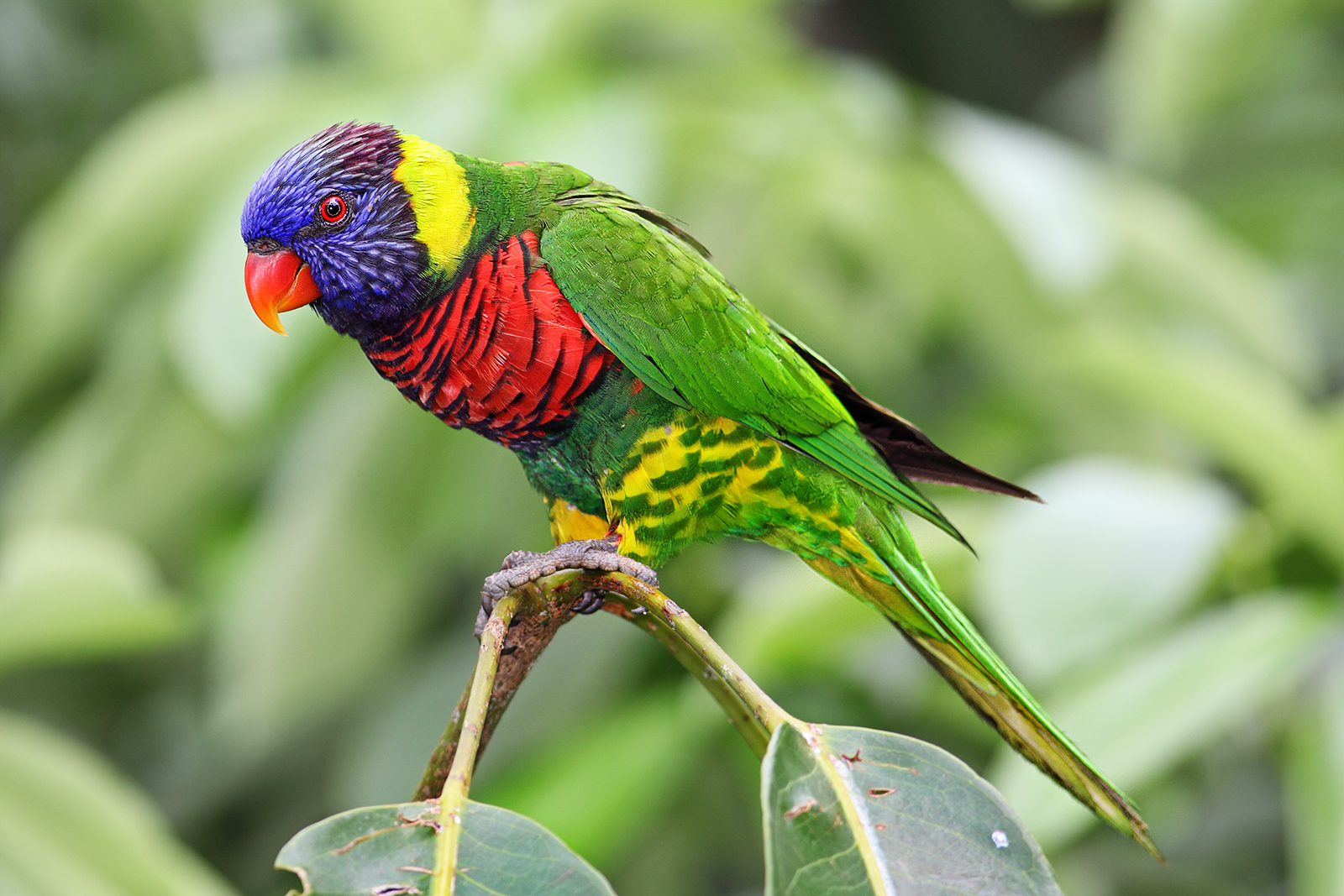Coconut Lorikeet - Trichoglossus Haematodus - Least Concern
The coconut lorikeet (Trichoglossus haematodus) is a parrot in the family Psittaculidae. Seven species of lorikeets now recognised were once lumped together under Trichoglossus haematodus.
Subspecies: Five subspecies are recognised.
T. h. haematodus – the nominate subspecies, is found in the southern Moluccas, west Papuan islands, and in the west and north coast of New Guinea.
T. h. massena – found in eastern New Guinea, Karkar Island, the Bismarck Archipelago, the Solomon Islands and Vanuatu
T. h. nesophilus – found on Ninigo and Hermit Islands (Admiralty Islands)
T. h. flavicans – New Hanover and the Admiralty Islands
T. h. deplanchii, also known as Deplanche's lorikeet, is found on New Caledonia and the Loyalty Islands
T. h. nigrogularis – Kai and Aru Islands, and southern New Guinea. This includes the former subspecies caeruliceps and resembles the rainbow lorikeet (T. moluccanus). Molecular analysis using mitochondrial cytochrome b confirms this subspecies as more closely related to the latter taxon.
"Coconut lorikeet" has been designated as the official common name for the species by the International Ornithologists' Union (IOC).
Description: The coconut lorikeet measures 25–30 cm (10–12 in) in length and weighs around 109–137 g (3.8–4.8 oz). The bill is orange-red, and the head dark blue fading to brown at the neck. It has a yellow collar and green upperparts. The breast is red with blue-black barring, and the belly is green with yellow barring. The tail is green above and barred in green and yellow below. The male's iris is bright red, while in the female it is orange-red.
Distribution and Habitat: Trichoglossus haematodus is found in eastern Indonesia, on Buru, Seram, Misool, Waigeo, Numfoor, Yapen and the Aru Islands, in Indonesia and Papua New Guinea on New Guinea, in the Bismarck Archipelago, the Solomon Islands, Vanuatu and New Caledonia.
The species occupies a wide range of lowland and wooded hill habitats, including mangroves, rainforest, nypa forest, swamps, savanna and woodland. It also occupies human-modified areas including coconut plantations, gardens, agricultural land and disturbed forest. It is found from sea level up to as high as 2,440 m (8,010 ft); this upper altitude level varies by location.
Biology: These lorikeets have on the tip of their specialized tongue a small brush, which is actually the tongue's extended papillae. With the help of the tongue, they are able to feed on nectar and pollen from flowers. They mainly feed on nectar and pollen, but they also eat other parts of the flowers, as well as seeds, fruits, berries, insects, and larvae. They usually make a huge noise during flight, emitting screeching calls (e.g. “peaow-peaow-peaow”), at regular intervals.
Coconut lorikeets are monogamous birds, choosing only one partner for their whole life. They are diurnal birds living in very large bands. In the evening, they join their fellows in a dormitory tree. These birds may breed throughout most of year, depending on the region. Usually they breed in the spring, from July to December. They usually raise one brood a year, sometimes two.
Nests are usually located in holes in decaying wood, such as hollows of eucalyptus trees, at a height of 25 metres (82 ft) above the ground. Females lay two matte white, round eggs and incubate them for 23–25 days. Parents feed the chicks for 7–8 weeks, after which they leave the nest and after another 2–3 weeks they become completely independent.

Psittaciformes, The Parrot Index, a part of Phoenix Feathers © 2016 - 2023
Page last updated: 12/24/23
Phoenix Feathers

